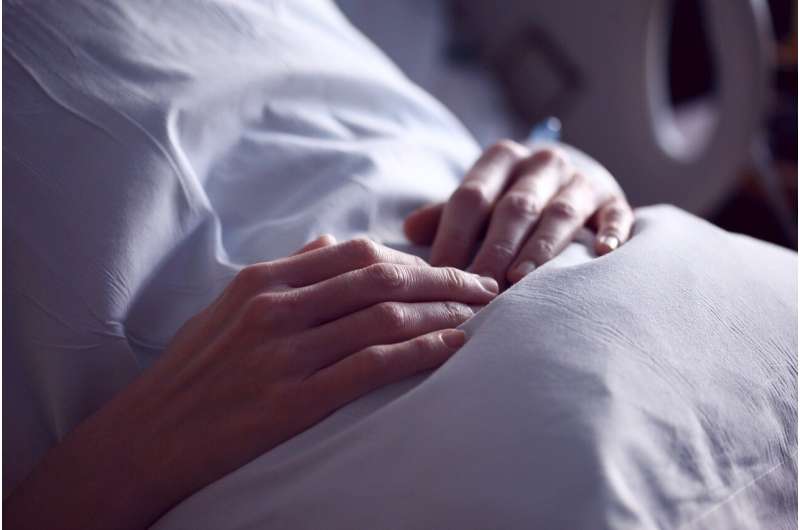This article has been reviewed according to Science X's editorial process and policies. Editors have highlighted the following attributes while ensuring the content's credibility:
fact-checked
trusted source
proofread
Study shows saliva gland abnormalities in Sjögren's worsens over time

New research at ACR Convergence 2023, the American College of Rheumatology's (ACR) annual meeting, shows that ultrasound-detected salivary gland abnormalities in primary Sjögren's become more severe over time and that the slow-to-progress disease likely starts long before it is first detected.
Sjögren's disease also known as Primary Sjögren's syndrome, is a systemic autoimmune disorder. It is marked by inflammation of the lacrimal and salivary glands, leading to chronic dry eyes and mouth. Fatigue is common, and about one-third of patients have complications affecting the lungs, skin, kidneys, and joints. Up to 60% of patients can develop systemic symptoms.
Salivary gland ultrasonography (SGUS) is a safe and noninvasive method for diagnosing and monitoring Sjögren's. Yet it is unclear whether the abnormalities it detects become more notable over time. Valérie Devauchelle-Pensec, M.D., Ph.D., professor of rheumatology in the department of Clinical Immunology and Rheumatology at the University of Brest Occidentale and the Cavale Blanche hospital in Brest, France designed a cross-sectional international study to find out.
"I have taken care of patients with Sjögren's disease for years, and I am always surprised that when I see them at the onset of their disease, their first ultrasound of the salivary gland shows severe lesions," Devauchelle-Pensec says. "I also have many patients with rheumatoid arthritis. In rheumatoid arthritis, joints are destroyed, but not at the onset of the disease. Sjögren's seems different. I wondered, 'When does the disease really begin and do lesions evolve over time or not?' Many of my colleagues who are experts in Sjögren's and ultrasound agreed to participate [in the study]."
Between May 2019 and February 2022, 247 patients from 11 international centers were consecutively enrolled in the study. Most were women, with a median age of 58. Nearly 100% of patients reported oral dryness; 75% had an abnormal salivary flow and 85% were positive for anti-SSA autoantibodies, a hallmark of Sjögren's. The median EULAR Sjögren's disease activity score (ESSDAI) was 3, suggesting low disease activity.
Ultrasound-detected functional abnormalities of the parotid and submandibular gland were classified according to the most recent Outcome Measures in Rheumatology (OMERACT) score, a four-grade semi-quantitative scoring system. The patients were then grouped according to disease duration dating from the start of dry mouth symptoms.
- Group A: less than five years (47 patients)
- Group B: five to nine years (69 patients)
- Group C: 10 to 20 years (78 patients)
- Group D: More than 20 years (53 patients)
When the researchers looked at the most severe gland for each patient, they found a significant association between disease duration and the OMERACT score. The odds ratio for the progression during a five-year interval was 1.23.
There was no statistical difference among the groups relative to the various ultrasound parameters, with the exception of the proportion of hyperechoic bands, which are associated with damage in established Sjögren's.
"We hypothesized that hyperechoic bands represent the slow fibroadipose evolution of the disease," Devauchelle-Pensec says. "To me, this says that Sjögren's begins long before we find it, so it is important to treat patients early."
She adds that the study pinpoints the importance of adding ultrasound findings to the classification criteria for Sjögren's syndrome and to the need for a better understanding of when the disease begins.
More information: Abstract #1371


















